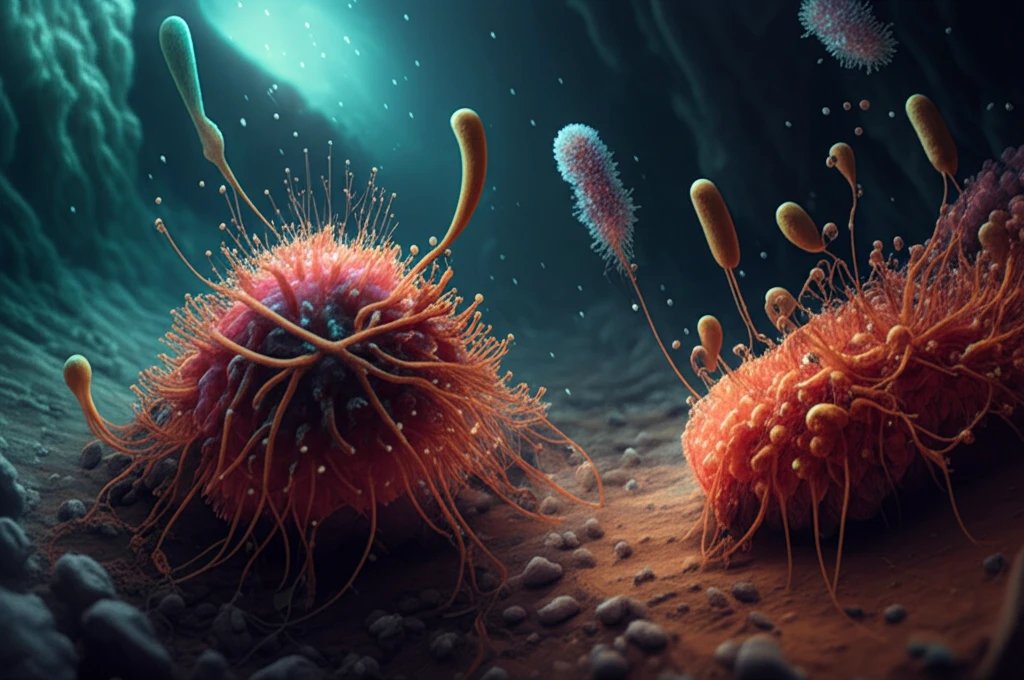
Unlocking Earth's Hidden Potential: How Bacteria Are Mining Metals From Marine Sediments
"Dive into the groundbreaking research revealing how marine bacteria can transform toxic tellurite into valuable tellurium, offering a sustainable solution for green technology and resource recovery."
In an era defined by the urgent need for sustainable solutions, scientists are increasingly turning to nature for innovative approaches to resource recovery. Recent research has illuminated the remarkable capabilities of certain marine bacteria to transform toxic metallic compounds into valuable resources. This groundbreaking work, focusing on the biomineralization of tellurium, promises to revolutionize how we approach resource management and green technology.
Tellurium, a rare metalloid, is crucial for manufacturing solar cells and other advanced electronic components. However, its scarcity and the environmental challenges associated with traditional mining methods necessitate the exploration of alternative extraction techniques. Enter the world of marine bacteria, tiny organisms with the extraordinary ability to convert tellurite, a toxic form of tellurium, into its pure metallic form. This biomineralization process not only detoxifies the environment but also provides a sustainable pathway for tellurium recovery.
Researchers have successfully isolated and identified several strains of bacteria from marine sediments off Niigata, Japan, that exhibit a high affinity for tellurite reduction. These bacteria, including novel strains of Shewanella algae, Pseudomonas pseudoalcaligenes, and Pseudomonas stutzeri, demonstrate remarkable resistance to tellurite's toxicity and efficiently convert it into tellurium nanorods. This discovery marks a significant step forward in harnessing nature's power for sustainable resource management.
The Marvel of Marine Biomineralization

The research detailed the isolation and characterization of three facultative anaerobe mesophilic bacteria from marine sediment collected off Niigata, Japan. These bacteria were identified as strains of Shewanella algae, Pseudomonas pseudoalcaligenes, and P. stutzeri, showcasing 99% homology in their 16S ribosomal DNA. What sets these strains apart is their ability to reduce tellurite (TeO32-) into elemental tellurium (Te0), a process known as biomineralization.
- Unique Strains: Identification of novel strains of Shewanella algae, Pseudomonas pseudoalcaligenes, and Pseudomonas stutzeri.
- Tellurite Resistance: High resistance levels enable survival and function in toxic environments.
- Nanorod Formation: Intracellular aggregation of tellurium nanorods with a minimum unit size of 60 nm.
- Sustainable Recovery: Potential for environmentally friendly tellurium extraction.
A Sustainable Future Powered by Bacteria
The discovery of these tellurite-reducing marine bacteria opens up exciting possibilities for sustainable resource recovery and environmental remediation. By harnessing the natural capabilities of these microorganisms, we can develop innovative bioprocesses for extracting valuable metals from waste streams and low-grade ores, reducing our reliance on traditional mining practices. Further research into the genetic and metabolic mechanisms underlying tellurite reduction will pave the way for optimizing these bioprocesses and unlocking the full potential of bacterial biomineralization. As we continue to face resource scarcity and environmental challenges, these tiny organisms may hold the key to a more sustainable and prosperous future.
